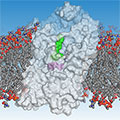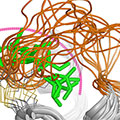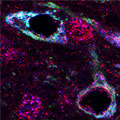Featured Paper of the Month – December 2020
Published in ACS Medicinal Chemistry Letters by Battiti, Francisco O; Newman, Amy Hauck; Bonifazi, Alessandro
In this study, starting from our highly selective and potent D3R agonist 5 , we further investigated the chemical space around the linker portion of the molecule, via insertion of a hydroxyl substituent and ring-expansion of the trans cyclopropyl moiety into a trans -cyclohexyl scaffold…










